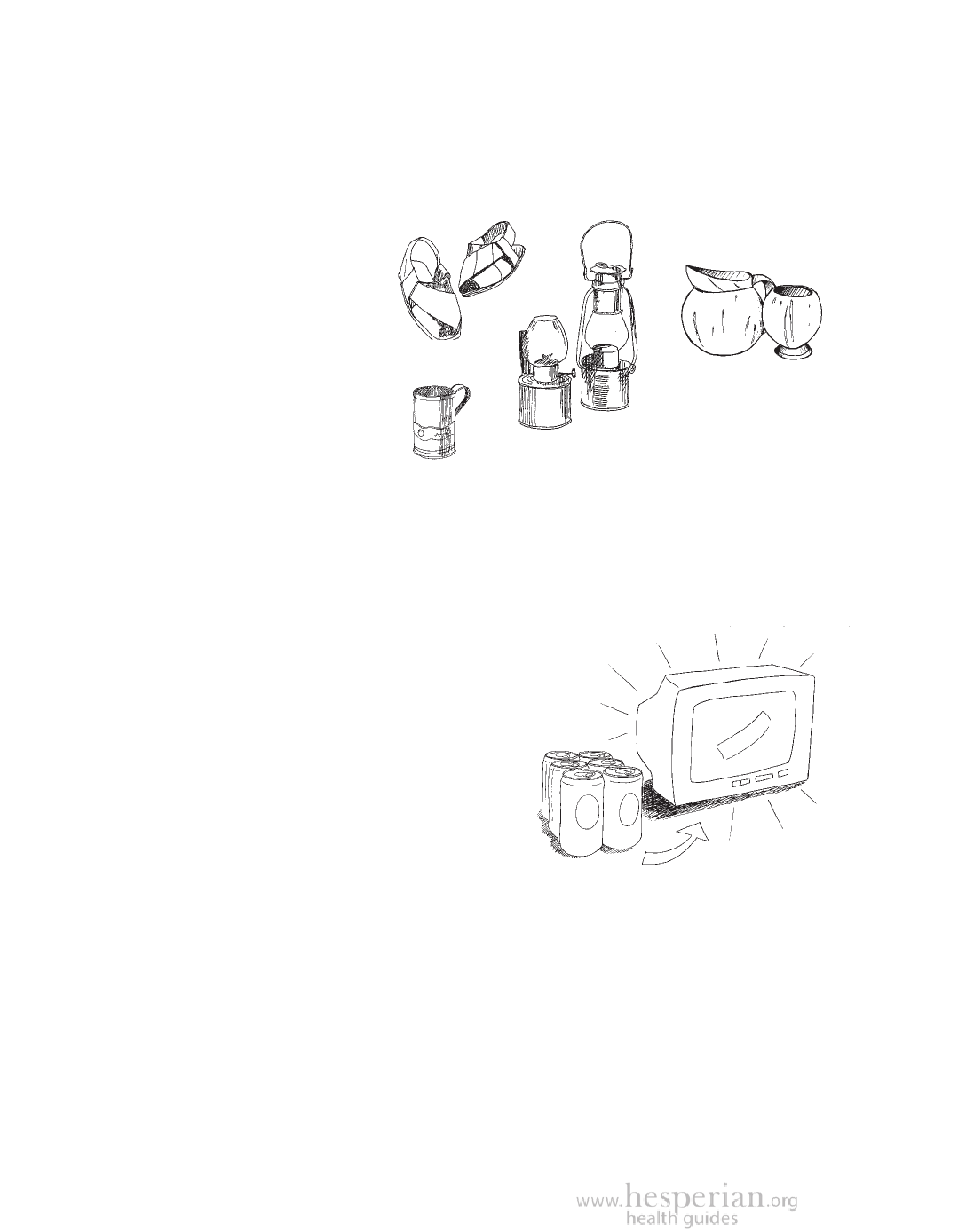
404 Solid Waste: Turning a Health Risk Into a Resource
Reuse what you can
One person’s trash is often useful to someone else. All over the world, people
save money and protect the environment by inventing methods to safely reuse
discarded materials.
From tires, make sandals,
buckets, and planters.
From tin cans, make lamps,
planters, and candle holders.
From waxed food containers,
make shopping bags.
From coconut shells, make
cups, forks, and spoons.
From banana tree leaves,
make plates and bowls.
Many new products are easily made
by reusing discarded wastes.
From scrap metal, make stoves, lamps, and art.
Paper can be shredded and compacted for home insulation or to make briquettes
for burning.
Sawdust can be used in composting, in dry toilets, or pressed into briquettes
with manure and other dry organic matter and burned as fuel.
Recycling turns waste into a resource
Recycling takes products that are no longer useful
and turns them into source materials to make new,
useful products. Recycling some materials
(such as metals and rubber) must be done
in factories. Other materials, such as paper
and glass, require less equipment and space
and can be recycled in small workshops or
people’s homes.
Recycling is an important way to
reduce waste. But recycling requires support
from government and industry, as well as a
commitment by communities and people. If there
is no market for recycled products, or if they are
not recycled safely, recycling is no solution at all.
Recycling just one 6-pack of
aluminum cans saves enough
energy to power a TV for 18 hours!
Recycling reduces waste by changing it into new products, and also saves
energy used in manufacturing. For example, it takes ⅔ less energy to recycle
paper than to make new paper, or to make steel from scrap metal rather than
raw ore. Making aluminum from scrap takes a tiny amount of the energy it
takes to make aluminum from raw bauxite ore.
A Community Guide to Environmental Health 2012